Abstract
OBJECTIVES. This study sought to describe patterns of initiation, persistence, and cessation in drug use in individuals from their late 20s to their mid-30s, within a broad perspective that spans 19 years from adolescence to adulthood. METHODS. A fourth wave of personal interviews was conducted at ages 34-35 with a cohort of men and women (n = 1160) representative of adolescents formerly enrolled in New York State public secondary high schools. A school survey was administered at ages 15-16, and personal interviews with participants and school absentees were conducted at ages 24-25 and 28-29. Retrospective continuous histories of 12 drug classes were obtained at each follow-up. RESULTS. There was no initiation into alcohol and cigarettes and hardly any initiation into illicit drugs after age 29, the age at which most use ceased. The largest proportion of new users was observed for prescribed psychoactives. Periods of highest use since adolescence based on relative and absolute criteria were delineated. Among daily users, the proportions of heavy users declined for alcohol and marijuana but not for cigarettes. CONCLUSIONS. Cigarettes are the most persistent of any drug used. Drug-focused interventions must target adolescents and young adults.
Full text
PDF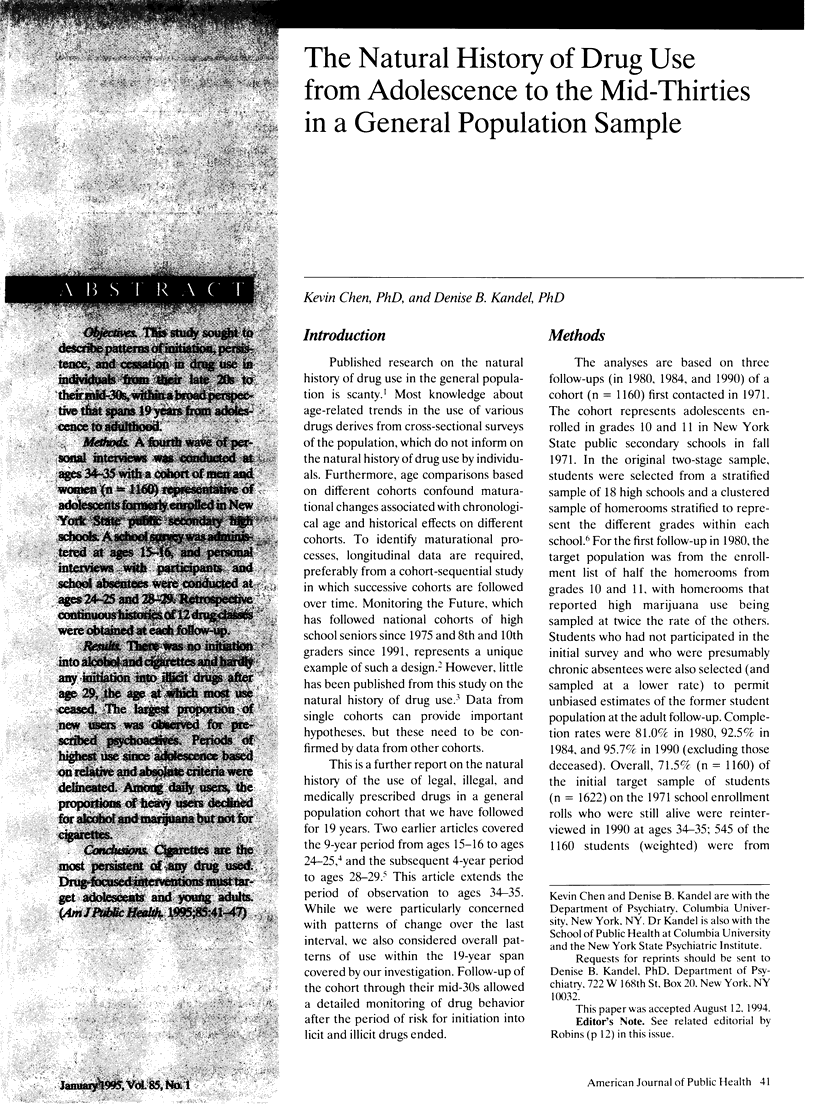
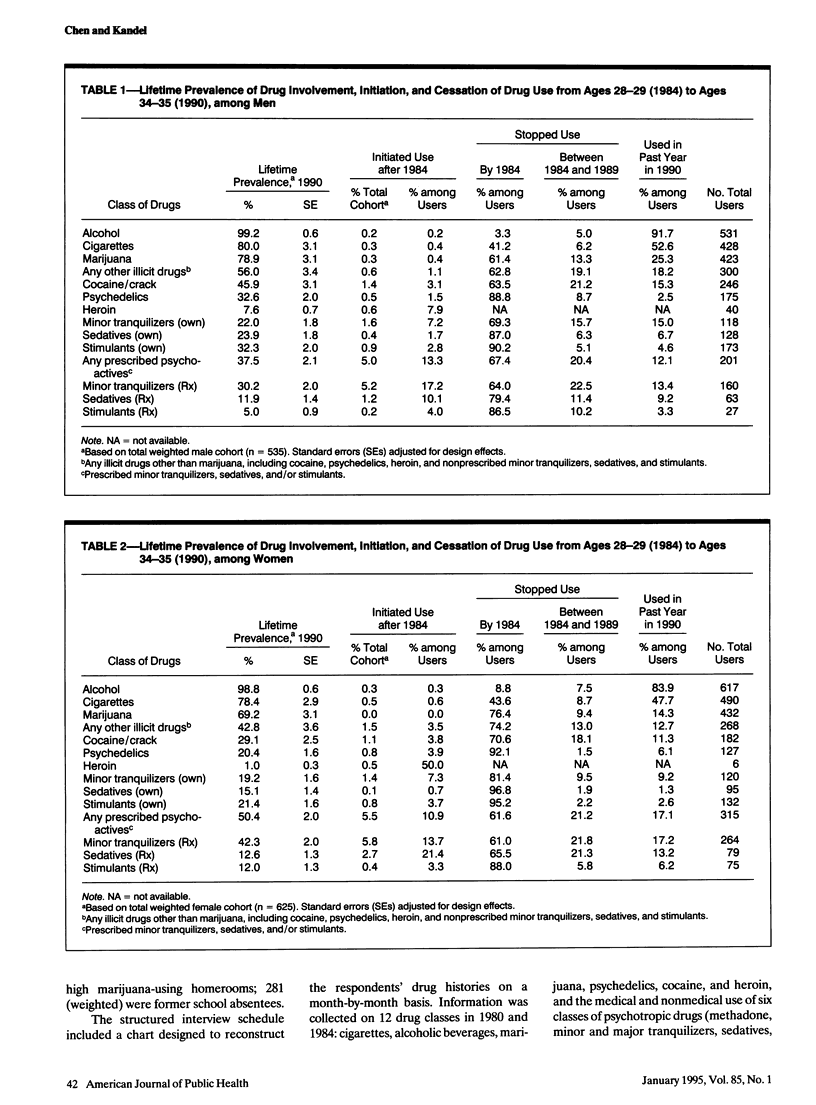
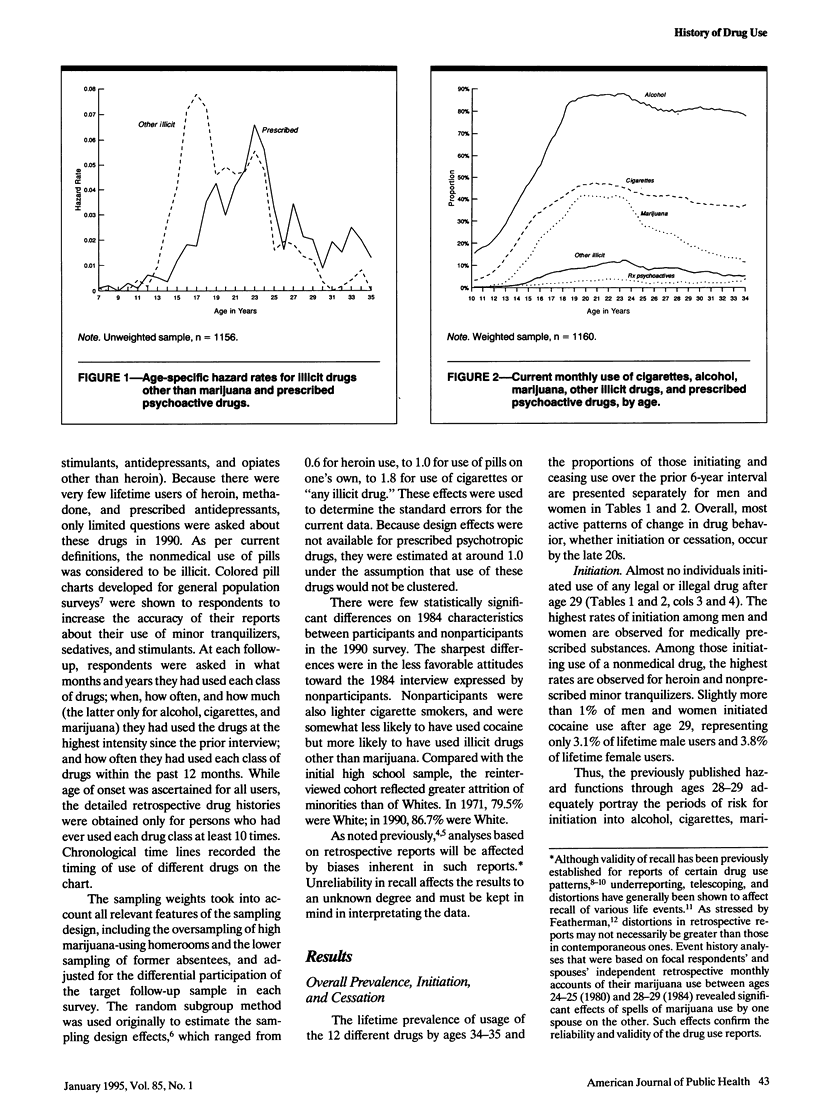
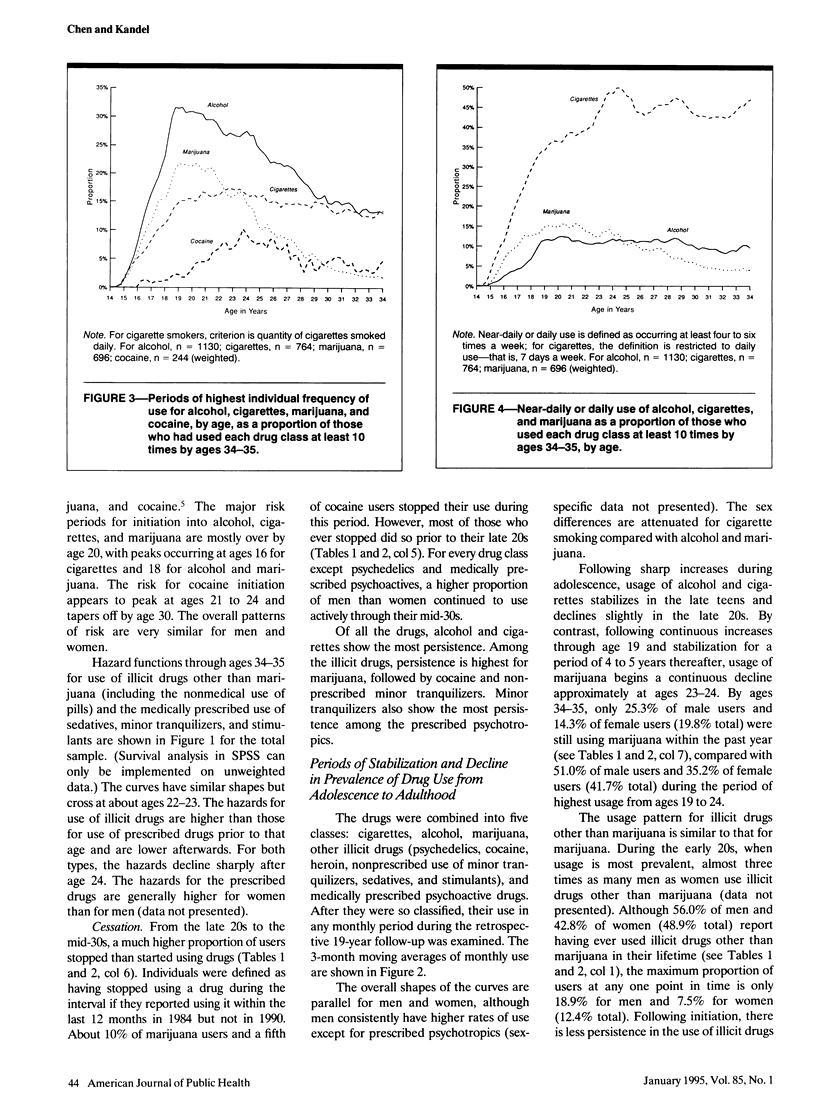
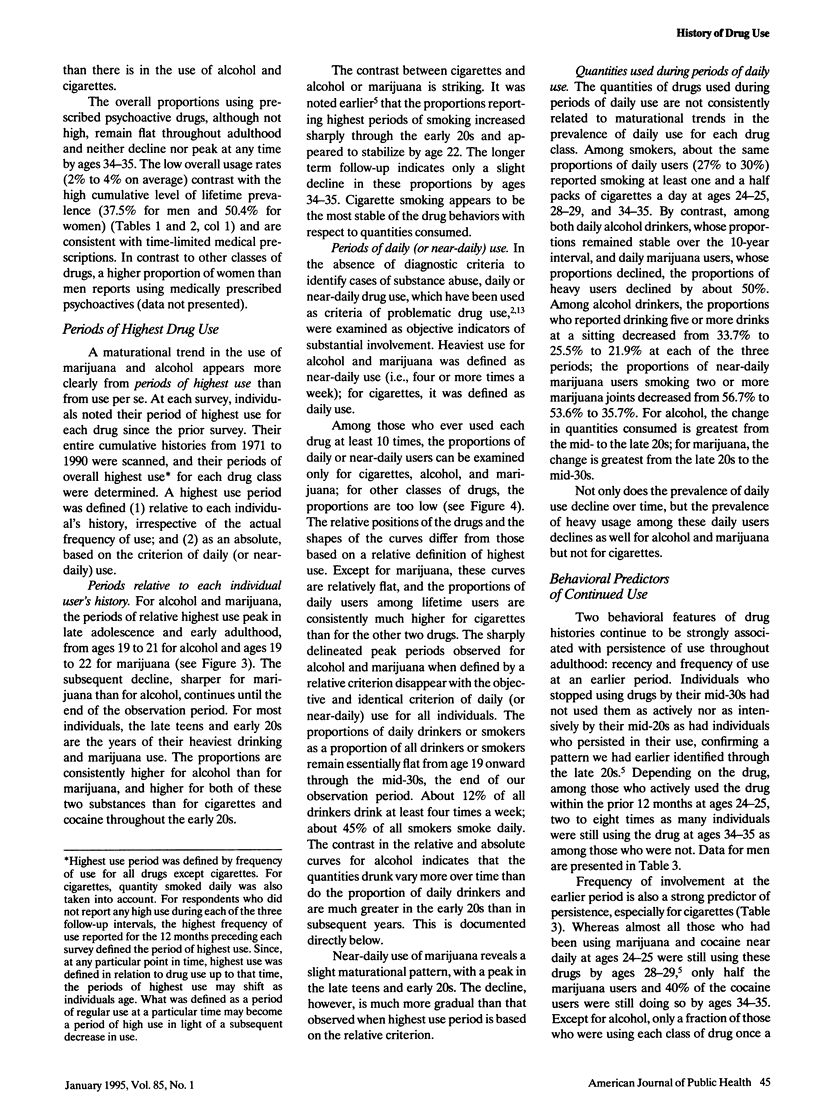
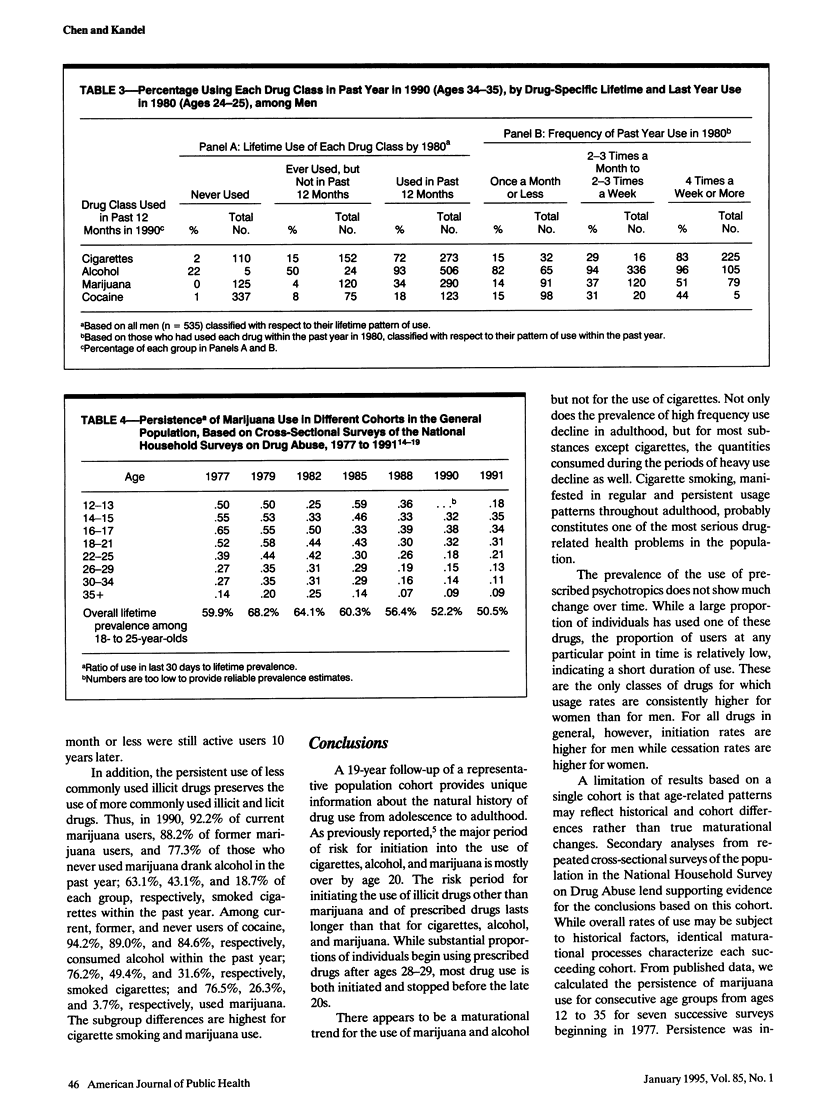
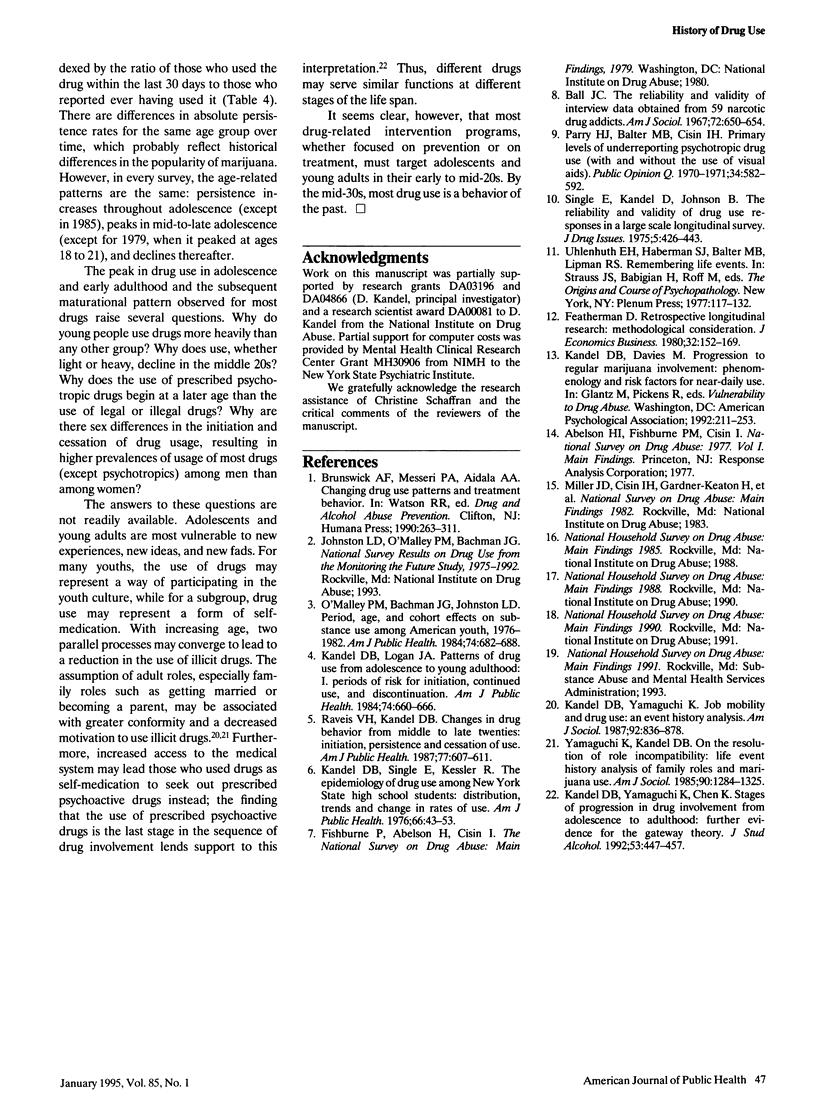
Selected References
These references are in PubMed. This may not be the complete list of references from this article.
- Ball J. C. The reliability and validity of interview data obtained from 59 narcotic drug addicts. AJS. 1967 May;72(6):650–654. doi: 10.1086/224401. [DOI] [PubMed] [Google Scholar]
- Kandel D. B., Logan J. A. Patterns of drug use from adolescence to young adulthood: I. Periods of risk for initiation, continued use, and discontinuation. Am J Public Health. 1984 Jul;74(7):660–666. doi: 10.2105/ajph.74.7.660. [DOI] [PMC free article] [PubMed] [Google Scholar]
- Kandel D. B., Yamaguchi K., Chen K. Stages of progression in drug involvement from adolescence to adulthood: further evidence for the gateway theory. J Stud Alcohol. 1992 Sep;53(5):447–457. doi: 10.15288/jsa.1992.53.447. [DOI] [PubMed] [Google Scholar]
- Kandel D., Single E., Kessler R. C. The epidemiology of drug use among New York State high school students: Distribution, trends, and change in rates of use. Am J Public Health. 1976 Jan;66(1):43–53. doi: 10.2105/ajph.66.1.43. [DOI] [PMC free article] [PubMed] [Google Scholar]
- O'Malley P. M., Bachman J. G., Johnston L. D. Period, age, and cohort effects on substance use among American youth, 1976-82. Am J Public Health. 1984 Jul;74(7):682–688. doi: 10.2105/ajph.74.7.682. [DOI] [PMC free article] [PubMed] [Google Scholar]
- Raveis V. H., Kandel D. B. Changes in drug behavior from the middle to the late twenties: initiation, persistence, and cessation of use. Am J Public Health. 1987 May;77(5):607–611. doi: 10.2105/ajph.77.5.607. [DOI] [PMC free article] [PubMed] [Google Scholar]


